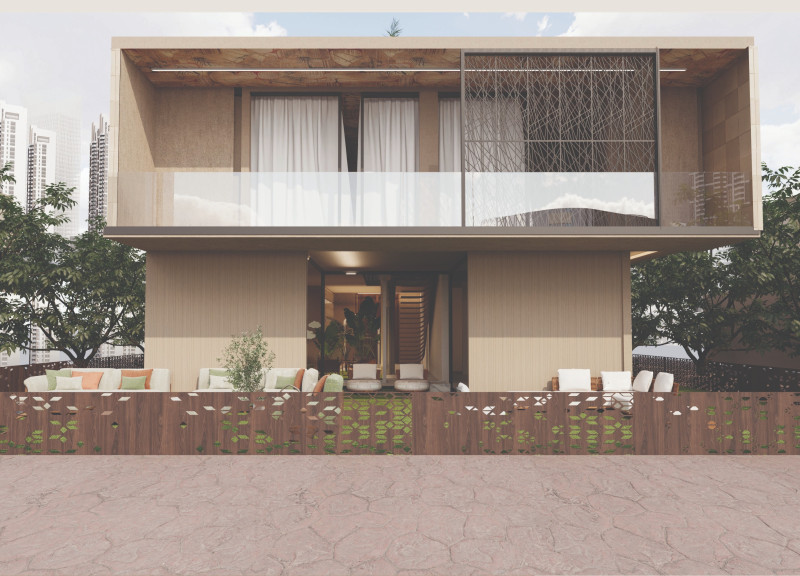5 key facts about this project
The project serves a clear purpose, whether it be residential, commercial, or mixed-use, and is meticulously crafted to accommodate its intended functions. The spatial organization of the project reflects a careful consideration of flow, accessibility, and comfort. Key areas within the design are intentionally positioned to optimize interaction and usability, making sure that movement through the spaces feels natural and intuitive.
One of the crucial elements of this architectural design is its materiality. The careful selection of materials enhances not only the building’s structural integrity but also its aesthetic appeal. Using concrete as a primary material lends durability, while large glass façades invite ample natural light and blur the boundaries between indoor and outdoor realms. This transparency cultivates a connection to the external environment and allows occupants to engage with their surroundings fully. Wood accents throughout the project add warmth and texture, creating inviting spaces for users to gather and interact. The inclusion of steel elements strengthens the structure and provides a robust framework, particularly where expansive openings are essential.
Attention to detail is evident in the architecture, particularly in the finishing elements and how different materials complement each other. The color palette chosen for the exterior and interior spaces promotes cohesion while subtly harmonizing with the project's context. Textural contrasts created by different surfaces enhance the overall experience, encouraging exploration and engagement with the building’s features.
Unique design approaches contribute to the project's identity. Sustainable practices are seamlessly integrated into the architecture, showcasing commitment to environmental responsibility. Elements such as green roofs and rainwater harvesting systems illustrate a dedication to minimizing the ecological footprint. Additionally, innovative technology is incorporated within the design, allowing for smart functionalities that improve efficiency and user experience without compromising the overall aesthetic.
This project’s architectural design not only fulfills its practical functions but also establishes a sense of place and identity within the community. The dynamic relationship between the building and its environment reflects an understanding of context while encouraging interaction among users. Its various spaces are designed to foster social connectivity, whether through communal areas or flexible workspaces, highlighting the importance of collaboration and community in modern architecture.
As readers delve deeper into the architectural plans, architectural sections, architectural designs, and architectural ideas associated with this project, they will find a wealth of insights that further illustrate the thoughtful considerations made throughout the design process. Exploring these elements will provide a comprehensive understanding of how the architecture effectively serves its intended purpose while contributing positively to the broader urban landscape. Discover more in the project presentation to appreciate its full intricacies and the architectural intent behind every detail.


 Omar Ezzeldin Abdelhamid Mohamed Osman,
Omar Ezzeldin Abdelhamid Mohamed Osman,  Awny Ezzaeldin Abdelhamid Mohamed Mohamed Osman
Awny Ezzaeldin Abdelhamid Mohamed Mohamed Osman 























